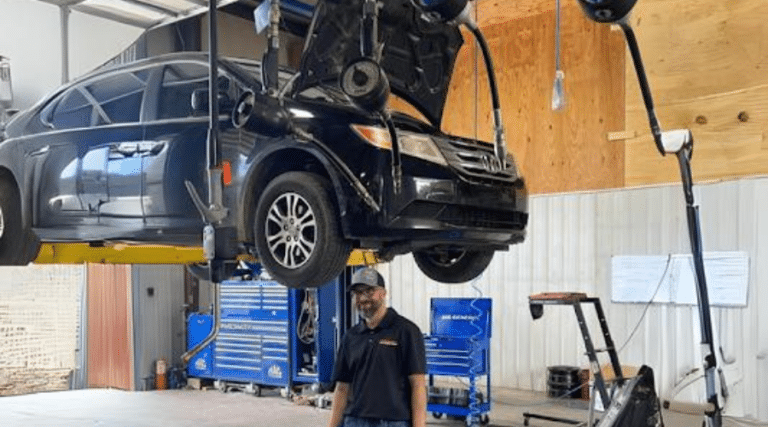All Categories
Featured
Appropriate tire maintenance is crucial to extending the life of your car and making sure a smooth and risk-free driving experience. Two of the most essential tire solutions are tire rotation and alignment. These services not only avoid premature tire wear however likewise improve handling, fuel effectiveness, and general safety and security. If you're unknown with what tire rotation and alignment entail, below's a thorough consider why they matter and exactly how they benefit your lorry.
What Is Tire Rotation? Tire rotation describes moving your tires from one placement to one more to ensure they wear uniformly. The factor tire turning is necessary is since not all tires wear the exact same means. In front-wheel-drive cars, as an example, the front tires handle both guiding and power, that makes them wear faster than the back tires. The rear tires wear in different ways in rear-wheel-drive and all-wheel-drive cars.
By revolving your tires routinely, you can stabilize out the wear throughout all 4 tires. This aids them last longer and enables more even grip, enhancing handling and security. Many suppliers suggest revolving your tires every 6,000 to 8,000 miles or based on the lorry's handbook.
What Is Tire Alignment? Tire alignment, also referred to as wheel alignment, refers to the process of adjusting the angles of your car's wheels to meet the maker's specifications. The goal of positioning is to make sure that all four tires are pointing in the ideal instructions and at the right angles, which enables optimal handling, safety, and tire life.
There are three major positioning angles that are adjusted throughout a placement check:

Camber: The tilt of the wheels when viewed from the front. If the camber is off, it can cause uneven tire wear, as the tire will not make complete contact with the roadway surface. Wheel: The angle of the steering axis when watched from the side. Proper wheel positioning makes certain that your car is steady when driving straight which your guiding wheel returns to its normal placement after a turn. Toe: The angle at which the tires direct inward or exterior when seen from above. Wrong toe alignment can create the tires to drag, resulting in uneven wear and decreased fuel efficiency. Misalignment can occur in time because of regular driving or from striking challenges like aesthetics or pockets. If your placement is off, it is necessary to obtain it examined and remedied to stay clear of concerns later on.
Why Tire Turning and Alignment Matter. Boosted Tire Life:. Regular tire turning guarantees also tire wear, assisting you get the most gas mileage out of your tires. Unequal wear can create you to replace tires too soon, which can be pricey. When your tires wear uniformly, they last longer, conserving you cash in the long-term.
Improved Lorry Handling:. Appropriate alignment maintains your automobile driving straight and secure, particularly at higher rates. Imbalance can create your auto to draw to one side, making it tougher to guide. By keeping your tires straightened, you ensure your vehicle manages much more smoothly and predictably.
Improved Safety:. Tires that are not revolved or aligned effectively can put on unevenly, affecting how well your automobile stops and corners. For example, misaligned tires or tires with irregular wear patterns might cause decreased grip, particularly in damp or icy conditions, causing a higher threat of crashes.
Better Fuel Effectiveness:. Tires that are misaligned can create rolling resistance, suggesting your engine has to function harder to relocate the cars and truck. This increases fuel consumption and reduces your auto's fuel efficiency. Correct tire alignment decreases rolling resistance, which can enhance gas mileage.
Indicators Your Tires Required Rotation or Positioning. While it's essential to remain on top of regular tire turnings and placements, there are a couple of indicators that might suggest your tires require interest:
Uneven Use: If you observe that tire is extra used than the others, it's most likely time for a turning. Guiding Pull: If your automobile pulls away or really feels off-center, maybe an indication of imbalance. Vibrations: If you really feel vibrations in the guiding wheel or the cars and truck, maybe as a result of an alignment problem. Noisy Tires: Squealing or loud tires might indicate inappropriate turning or imbalance. If you notice any of these indications, it is necessary to get your tires examined by a professional.
How Typically Should You Revolve and Align Your Tires? Tire rotation must typically be done every 6,000 to 8,000 miles, though this can vary based on your driving conditions and the kind of lorry you drive. It's additionally an excellent idea to have your tires rotated whenever you get an oil change.
For positioning, you must have your tires aligned every 1-2 years, or more frequently if you notice any type of issues with handling or unequal tire wear. If you struck a big pothole or curb, it's smart to obtain a positioning examine immediately.
Conclusion: Normal Maintenance for Optimum Performance. Tire turning and placement are 2 basic however crucial services that keep your auto running efficiently, effectively, and safely. By turning your tires on a regular basis and maintaining your wheels correctly lined up, you can extend the life of your tires, improve handling, and take pleasure in far better fuel effectiveness. Do not wait for your tires to show indicators of wear-- schedule routine upkeep to keep your vehicle in top shape. Routine tire care is an investment that pays off in the lengthy run, maintaining you and your passengers risk-free when driving.
Latest Posts
Why Routine Roofing Evaluations Are Vital
Maintain Your Automobile in Top Forming with General Upkeep
Bare Bones Furniture-- Where Simpleness Satisfies Stamina